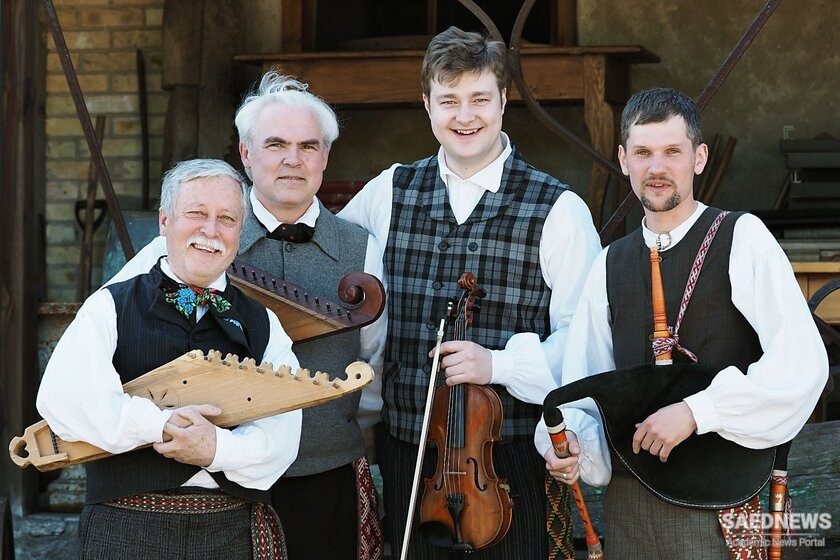In the United States, “folk music” combines a sense of old songs and tunes with an imaginary “simpler” lifestyle, featuring the mountaineers of Appalachia and the African American blues singers, all playing acoustic instruments—guitar, fiddle, banjo—with a hint of social signifi cance. Generations reshape and “revive” this model at any time, including today. In the United Kingdom, “folk” along these lines blurs into Celtic and regional identities. In Europe, even though the word comes from the German volk (folk), the genre has different overtones based on local social resonance.
For example, French musique populaire and Italian musica popolare, each with distinctive meanings, import the English “folk,” or “folk revival” to describe some styles. The various Slavic words based on the root term narod live in a regional world of their own, with many internal shadings and changing connotations. It is so hard even for Westerners to agree on the term that the International Folk Music Council, which debated long and hard in the 1950s to defi ne its subject, simply gave up and changed its name to the International Council for Traditional Music.
Outside the Western world, “folk” exists as a term from foreign shores. In India, it bears colonial traces and class markings, as folklorica does in Latin American usage. Europeans (or, later, Americans) came, observed, recorded, and wrote about the many musical communities they encountered, some of which they labeled “folk,” a term that survives and thrives in today’s urbanized, organized, and commercialized worlds of music. Sometimes they preferred the word “primitive” in describing the music of small-scale societies, a term that has, thankfully, dropped out of writing today. Musical tradition and innovation continue to fl ourish—often unlabeled—in the small-scale communities and urban neighborhoods of Africa, Asia, Oceania, Latin America, and the Caribbean and among indigenous peoples in the Americas, Australia, the Arctic, and the Pacific.
One core concept that can help to pinpoint where folk music lives is everyday musical invention. Behind the term lurks the comfortable sense of a face-to-face community that relies on homemade resonance to get through individual and collective experiences. Eventually, in a worldwide ripple effect diffusing from the West, the music moves out into broader public arenas and enters the marketing age. Today and tomorrow, global linkages increasingly bind even the remotest rural music to the cutting-edge scenes of the big cities and little handheld devices and to the boardrooms of corporations and large international organizations.
But don’t look for a chronology: this book warns against any straight-line view of musical change. Things loop back, spiral out, and sometimes even repeat themselves. No musician can step in the same cultural fl ow twice. Yet that musician might travel up or downstream, stand on the rocks in the middle, or jump across them in daring ways. This restless creativity perhaps best defi nes folk music. Even natural “folk,” like the humpback whales, change their favorite songs from year to year. This book will also loop back to selected specifi c settings, viewing the scene from different perspectives to avoid a partial view of folk music at work.
Locating folk music starts with the word “music” itself. Only a few European languages have a term broad enough to cover all the human sounds that we group together this way. Navajo doesn’t, nor does Arabic or most other languages. In fact, including the call to prayer alongside the melodies that mothers sing to their babies, or what singing stars present in nightclubs, can get a researcher in trouble. In most languages, each kind of performed sound might have a separate word, or a whole set of linked terms, without the umbrella term “music,” let alone “folk music.” So while folk music is clearly “there,” it springs from an act of imagination or academic analysis.
Folk music is not a set of songs and tunes; it is more of a working practice. People take available musical resources and develop strategies to make good use of them. Behind this work lie aims, reasons for giving music its share of your life and energy. Ordinary folksingers make music to enhance work with animals and crops, to raise children and keep family ties, to give voice to their beliefs, hopes, and identities, or to signal that they understand their place in society. In traditional Romania or Hungary, a woman was expected to lament loudly and expressively at the funeral of a loved one. She drew on local resources of melody, pitch, dynamics, and text. Her strategy was to conform to the expectations of her family and neighbors, since they would be listening and evaluating her performance, even in such a grief-stricken moment.
A woman’s aims might be multiple but certainly would include a strong desire to keep decorum and do things the right way. Beyond this apparent strategy might lie deeper drives. All around the eastern Mediterranean region, Tullia Magrini states that women project a strong sense of the pain they bear in their social setting, using ritual as a theatrical way to mark stressed moments—healing, death, pilgrimage. These actions can help heal communal scars even as they display women’s suffering and power: “In Mediterranean Catholicism and Orthodoxy, human and sacred femininity seem unavoidably bound together in the common destiny of bearing and publicly elaborating the painful sides of life.” Folk strategies are often highly gendered in very meaningful ways.


 Yaghoub Sahaf and Sight Singing
Yaghoub Sahaf and Sight Singing














































